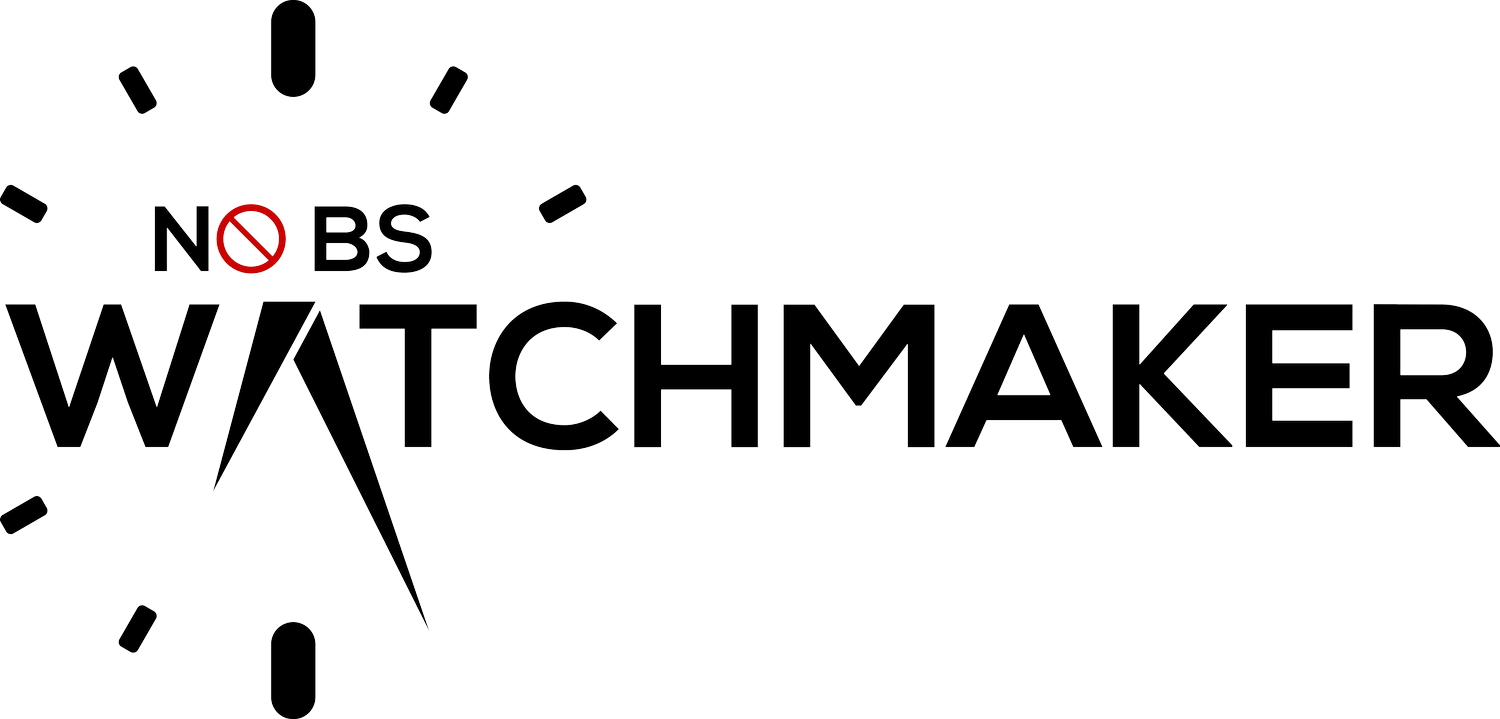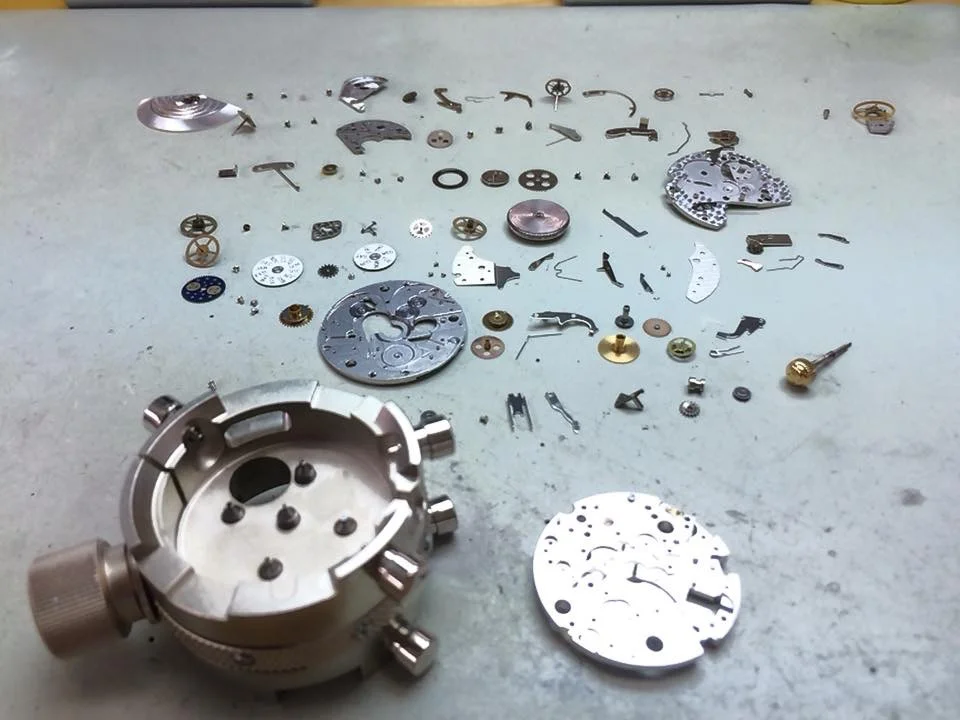Over the past few months a lot of you guys have approached me to learn watchmaking. You’re tired of the traditional schooling route. You’re tired of the boring jargon. You’re tired of a lot of things. You message me with the intent to learn from me. I’ve answered a lot of your questions but I feel that this needs to be public- even if it’s brief.
I teach watchmaking with a principles’ based approach backed up by practical actions. My approach to watchmaking can largely be based off of 3 key principles. There’s more but let’s keep it short for now.
These are:
1. The principle of Investigation & Analysis
2. The principle of Mechanical Interlock
3. The principle of Skill
Through the scopes of these principles, I see almost the entire world of watchmaking. Everything I teach, every question I ask, and every answer I offer makes at least one reference to one of these principles.
Watchmaking is as conceptual as it is practical. I often talk about how watchmaking translates into every facet of life. These principles (if understood) can quickly speed up the path of any student in any endeavor and field.
1. Investigation & Analysis
The ability to pause and reflect is such an immense tool. This is akin to a forensics science. The ability to look at what we currently have in front of us and to deconstruct what, how, and why something occurred. We are often working backwards on a “crime scene” to figure out possible causes and to have as much of the story as possible.
Once the causes have been confirmed, we then analyze to see if it is replicable. Can we replicate this problem? If I started from the beginning before all for this occurred, does my scenario work? We work backwards to see where the problem occurred and then attempt to replicate it. If it works, great- we’ve successfully figured it out. If it doesn’t, it’s back to the drawing board. You’ll find that it eventually turns into multiple A/B split testing scenarios and a “if-this-then-that” game as well.
Let me run you through a possible scenario of an investigation during the initial take-in. If a customer brought in a watch recently serviced watch and it wasn’t running correctly, we need to investigate why it isn’t.
1. Customer brings in a watch because it isn’t running.
2. You take it in and you analyze it thoroughly
3. You notice lots of huge dents and dings on the case and the sapphire crystal is also chipped.
4. You notice that the calendar date numbers aren’t aligning up in the date window.
5. Just that in itself has enough red flags to let me know that there could be possible impact damage already on this watch.
6. Customer complains that the watch doesn’t always run. It runs fine when it is flat on the table but doesn’t work when he is wearing it.
7. Since I already suspect impact damage, one of the first things I deduce is that there could be possible damaged pivots in the watch. Perhaps the one of balance staff pivot is broken.
8. Because I already have a possible cause, when I open it up, my goal is confirm. If it is not confirmed, I continue to find possible causes that fit aforementioned issues.
2. Mechanical Interlock
How pieces fit into a puzzle. How everything is connected. How everything works together in unison. This gives us the mechanical ability to break anything down. To understand that for this wheel to work, it needs to be interlocked with another part. Once we understand this principle, we can always understand what a part is intended to do. In watchmaking, something is always connected to something else. One little part can have a ripple effect on the entire watch. We need the macro and micro picture to master this principle.
Taking apart a watch is easy in the grand scheme of things
3. Skill
The skill to perform the necessary task at hand. Everything in Watchmaking has subsets and niches. Tweezers, screwdrivers, creating wheels and parts, regulating, hairspring work, etc. are all subsets of watchmaking. Each one requires skill and precision. You’d be hard pressed to find a specific act in watchmaking that doesn’t require a refinement of skill. One of my biggest questions in this principle is “Do you have the skill set required to fix the problem efficiently and effortlessly?”
Think of this as a video game. When you start off, your character has zero abilities in everything across the board. As you play, your character starts getting experience points in certain skill sets. You’ll realize what actions come easier for you compared to others. You also realize quickly in the game that there are many things you need to work on and that there are endless amounts of ability to “max out” these areas. Our goal in watchmaking is to be 100% on everything possible.
All too common in our industry and in others as well
PRINCIPLE BASED APPROACH
One of my biggest goals is to extend this principle’s based knowledge to everyone. Understanding these principles can play a tremendous role in advancing in other facets of life (sport, work, family, hobby, etc.) I’ve seen it time and time again.
Show me anything that involves mechanics in a macro environment (machinery, body mechanics, martial arts, chess, etc.) and I will show you how at least ONE of these concepts are involved. Once you learn to observe watchmaking and everything else in life through these principles, you will see something very different.
I don’t see many of these principles being taught. What I do see are paths that schools and mentors create to achieve some of these concepts indirectly but to emphasize them all in one and as a principles’ based approach- I have not seen.
WHERE DOES ALL OF THIS FIT INTO WATCHMAKING?
Where does all of this fit in the grand scheme of things in watchmaking? Investigating and analyzing is often seen as an end result when all else fails. Mechanical interlocking is seen as a fail safe mechanism when you’re trying to figure out how this one piece fits into the whole picture. Skill is really the only thing I see being taught in watchmaking school in terms of building attributes and industry specific reps. I aim to change this in the near future.
Check out this link to learn how to get into watchmaking
HOW I TEACH WATCHMAKING
I teach watchmaking backwards. Seriously.
Watchmaking always occurs in processes and sequences. The most common process begins by inspecting the watch at initial take-in, obsessively analyzing and figuring out the root problem, then running through the possible causes and fixes to address the root issue, and then finally performing the complete service.
HOW OTHERS TEACH
Most teachers of watchmaking teach in a way that reflects these fundamental processes. Usually I do too. Most of the early lessons of watchmaking involve theoretical, micro-mechanics, measuring, and creating. Complete services are taught as the end result. Almost as if it was the dessert after dinner. The issue is that the student spends more time on the precursors to a complete service rather than the complete service itself.
I think in a regular (traditional) school for watchmaking, this approach makes the most sense. However, when an individual comes to me with the goals of being a well-sought after, qualified, money-making and profitable watchmaker, I teach very differently.
ENDGAME IN MIND
I take a more practical approach. I begin with the end game in mind. I put an extreme emphasis on complete servicing. It’s the most practical approach to making money when becoming a watchmaker. It’s not to say that none of the early stuff taught in watchmaking school is trash- but we can worry about theory later.
One of the most common questions from anyone starting a new career is “When will this become profitable for me?” I address this early on. You can learn the practical side first that’ll help you make money and worry about the theoretical side later. In the long run, understanding the end-game in mind first will only help you appreciate the theoretical precursors to a complete service.
THE TYPE OF WATCHMAKER THAT WILL CHANGE THE INDUSTRY
I look to create a watchmaker who has tremendous confidence in their ability to service any watch that comes across their bench let alone complete a bench test. This creates a mindset in the watchmaking student to persistently hunt and seek a challenge at all times. If a student doesn’t genuinely believe in their abilities to do an overhaul (on any watch), how will they survive the onslaught of complications when they’re in the work force? If the student genuinely believes that they can do a complete service on any watch that comes across their bench, they will find a way to fix anything sooner or later. Just that in itself is worth its weight in gold. This is where the mindset and approach to the industry will change.
This creates a very different type of watchmaker. A watchmaker that is not bound by the traditional routes but sees and appreciates it for what it is. By starting with the end game in mind, the watchmaker is forced to work backwards. Not one where we’re traditionally taught to create, measure, and put together a watch but one where we disassemble, analyze, and reverse engineer our way to completion. Rather than see the complete service as an end-result in watchmaking, try to see it as the very essence of our industry and adjust your training accordingly. I’ve said it many times before and I’ll say it again, the work is where the magic is at.
IF YOU LIKED WHAT YOU READ, YOU’LL LOVE THE BOOK
I go over more stuff like how to get into watchmaking, how to get an apprenticeship under a watchmaker, and other industry tidbits you won’t find else where!







